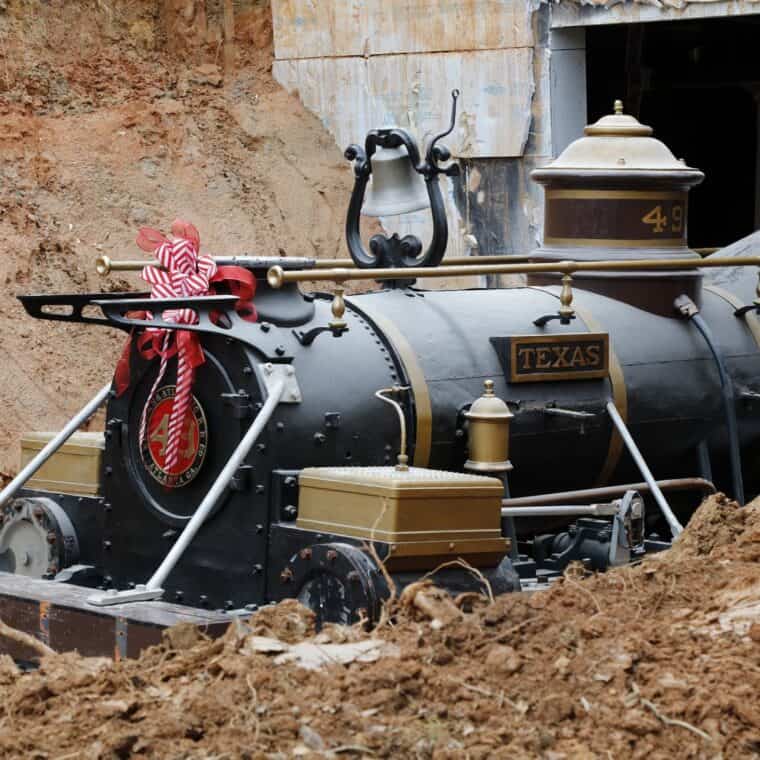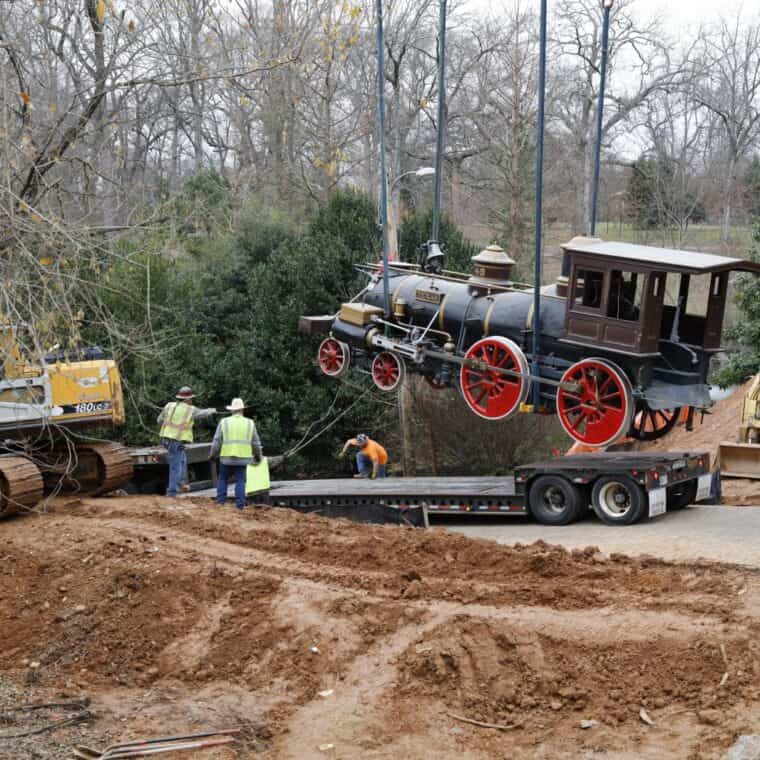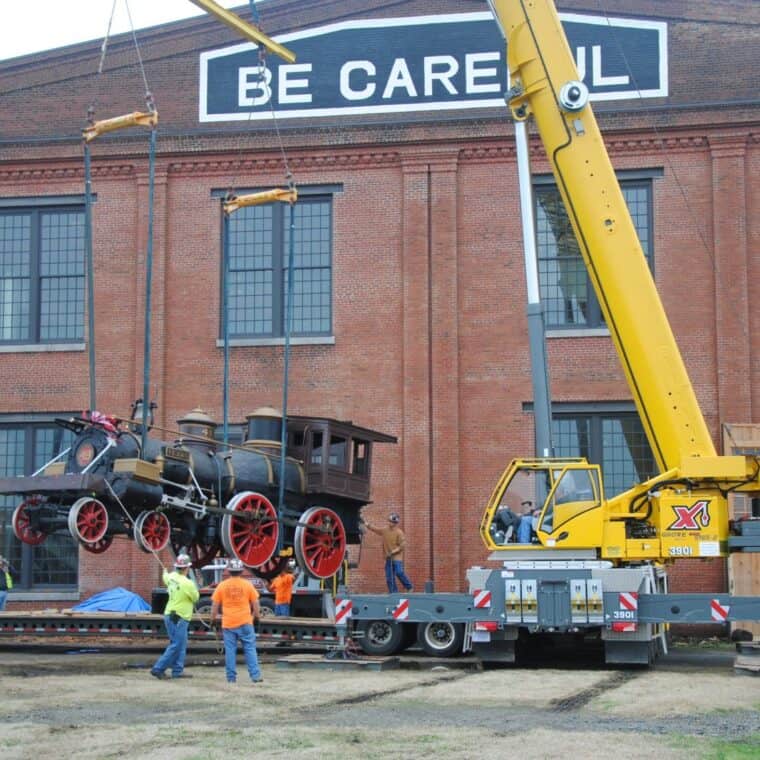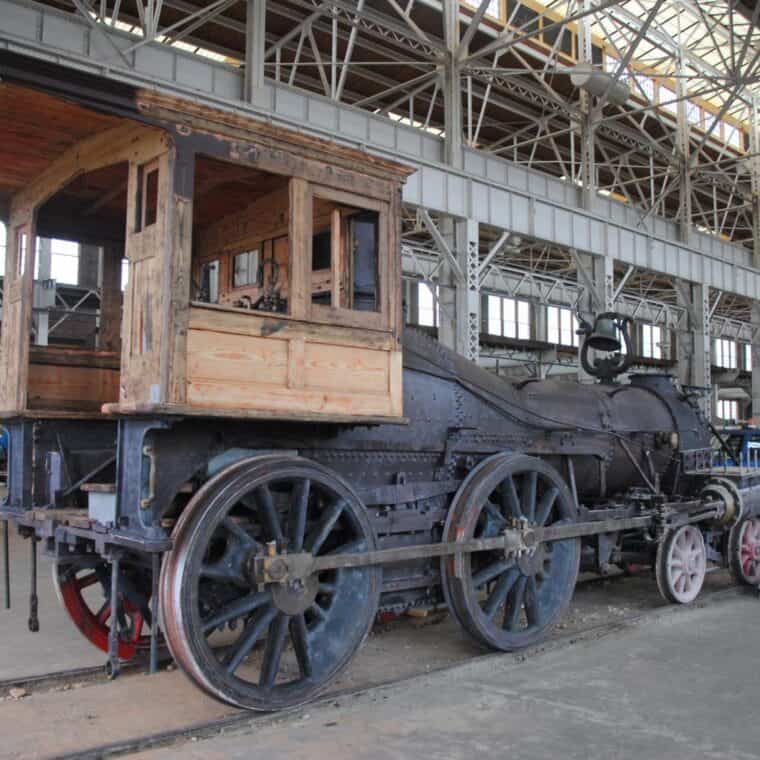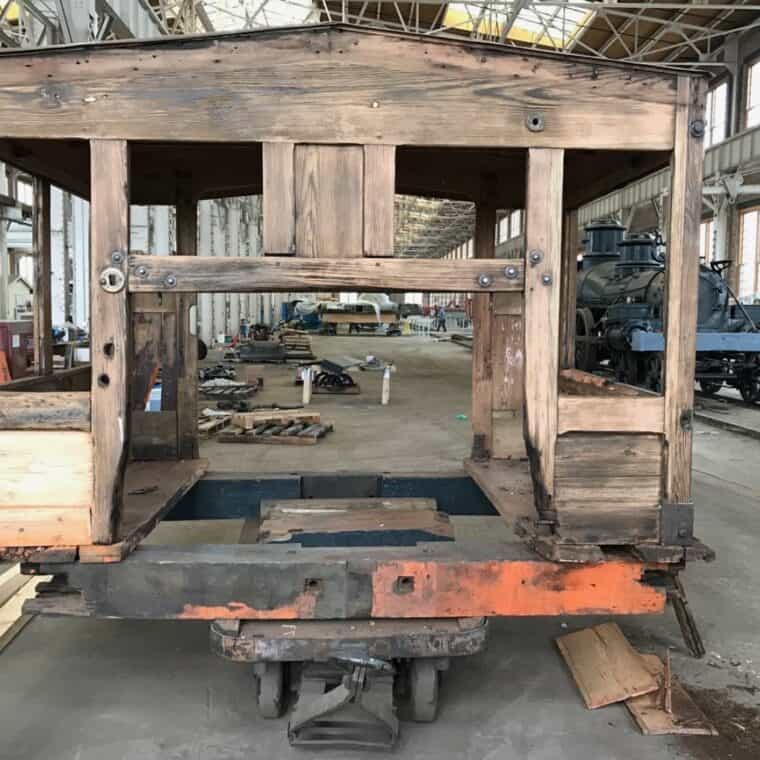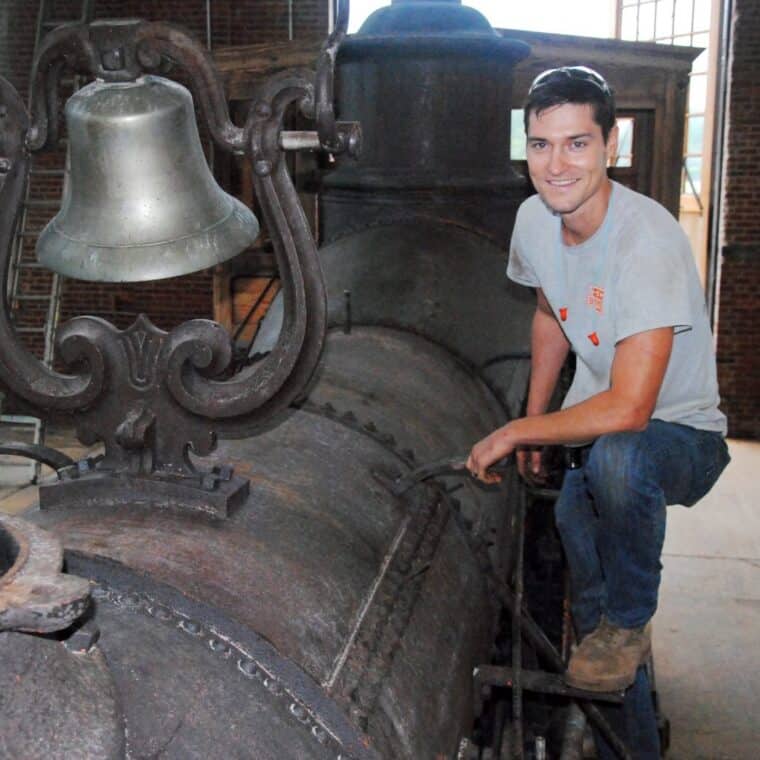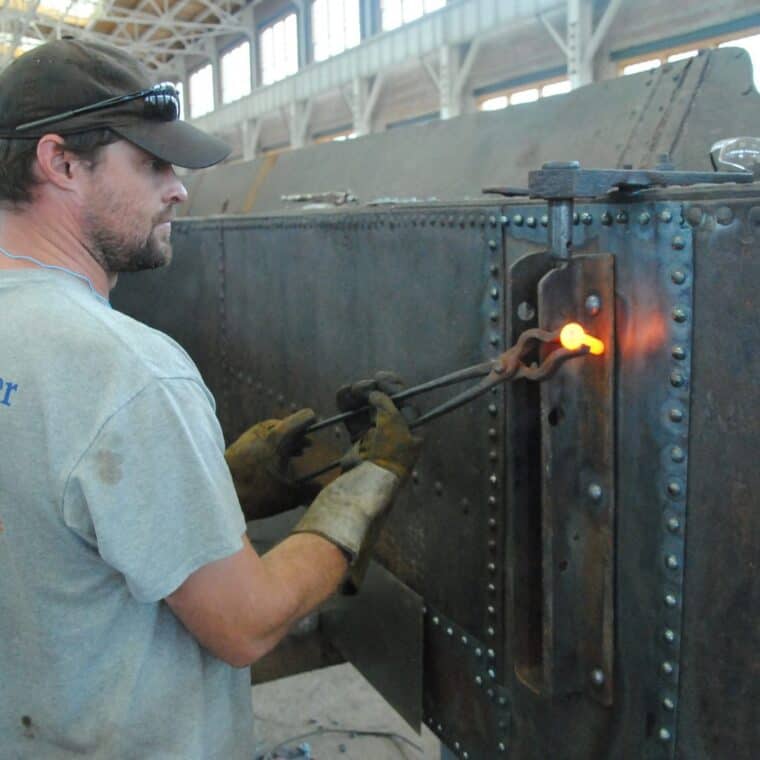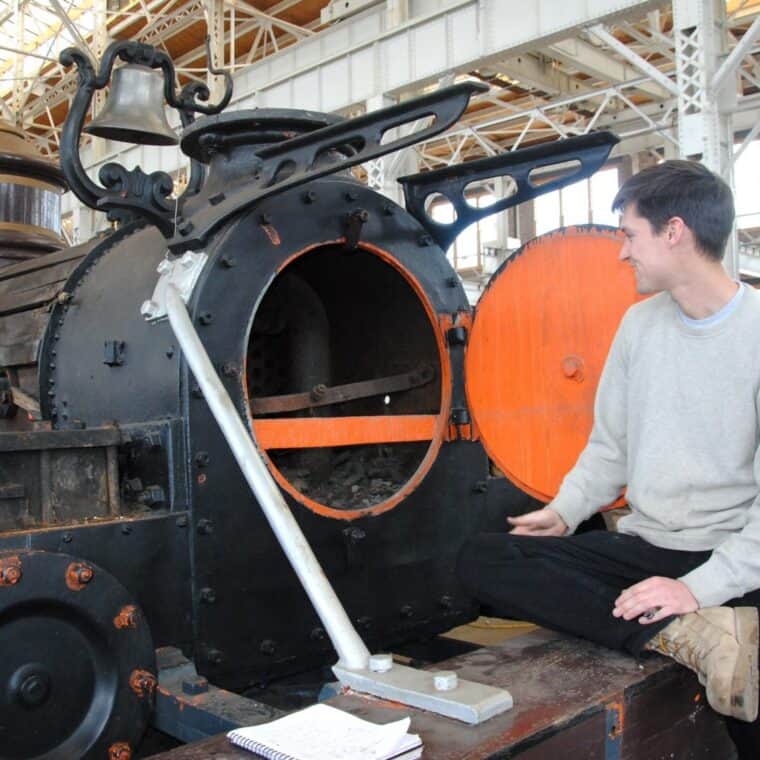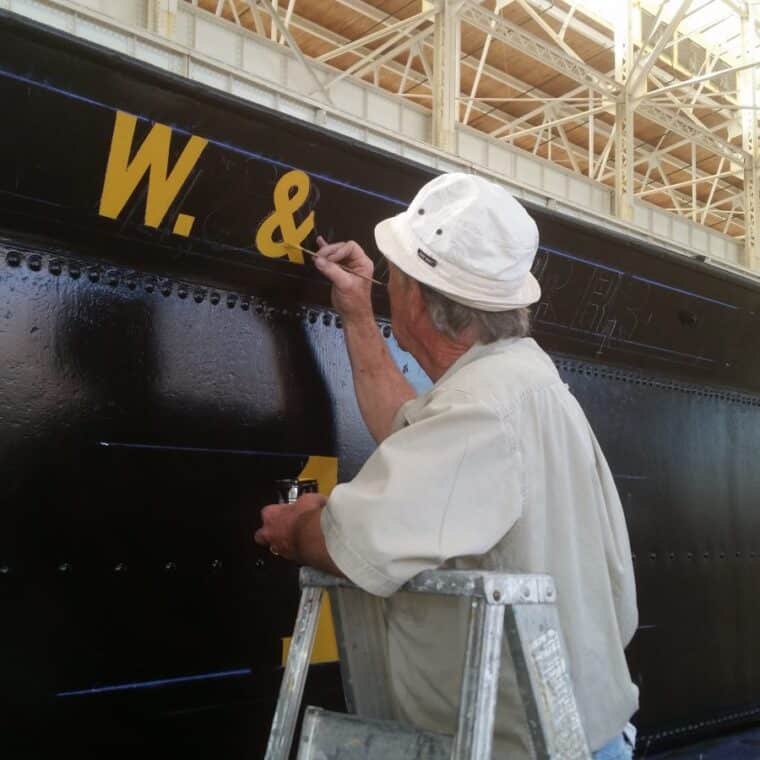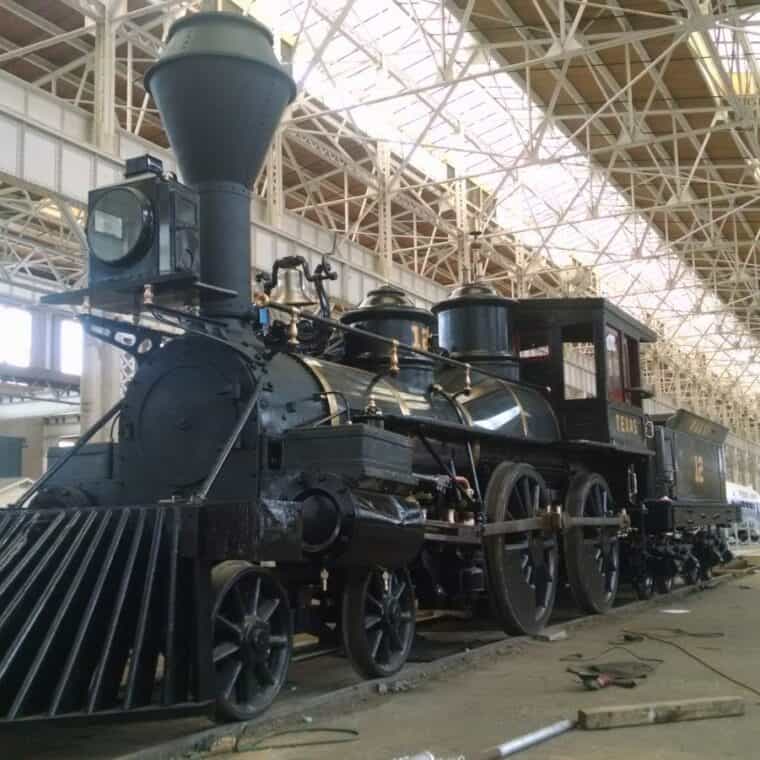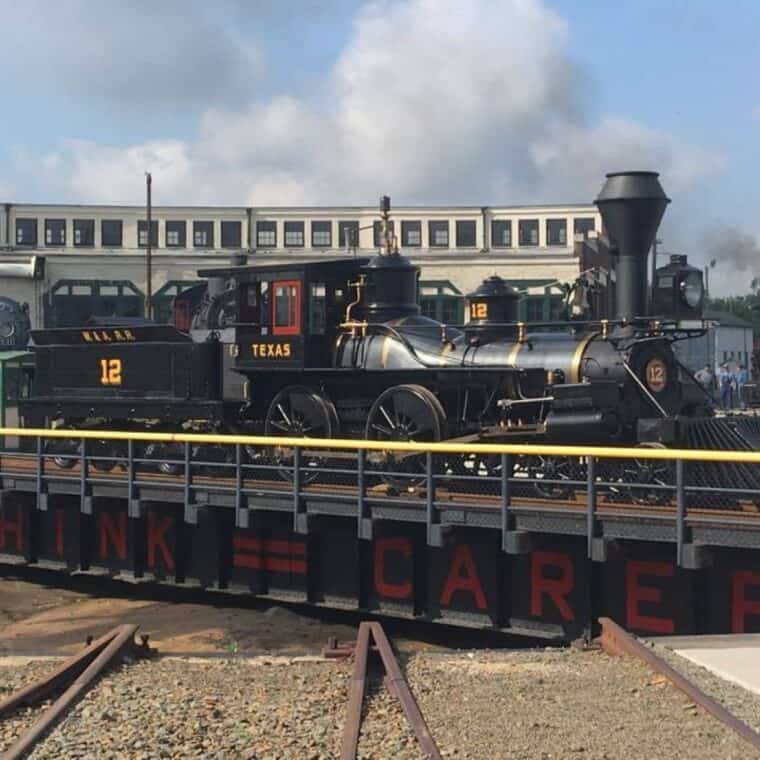The cornerstone of Locomotion: Railroads and the Making of Atlanta is the restored locomotive Texas. The engine was built in 1856 for the Western & Atlantic Railroad, which had established its terminus in 1837 at the site that became Atlanta. For that reason, the locomotive is an important link to the city’s origins.
Another important link to the city’s origins is the Zero Mile Post – one of the city’s most significant artifacts. Recently relocated to Atlanta History Center, the Zero Mile Post is the 1850s Western & Atlantic Railroad marker around which Atlanta grew. Positioning the Zero Mile Post beside the recently restored Texas locomotive, one of the two remaining Western & Atlantic locomotives [the other being the General] that would have passed by that very mile post scores of times during its service. Railroads built and created Atlanta, and these two objects tell Atlanta’s origin story like no others.
The Georgia Building Authority has agreed to a five-year renewable license agreement with Atlanta History Center to preserve and interpret the Zero Mile Post, which was installed in the 1850s to mark the Southern terminus of the Western & Atlantic Railroad. The site, near the Georgia Freight Depot, was used to determine the city center of Atlanta in 1842.
The Texas is at the heart of Locomotion’s story. Its design, the 4-4-0, was so iconic that it made up the center of the city’s first seal.
Usually placed along rail lines at each mile, markers informed train crews where they were along a specific route. The above-ground portion of the rectangular marker measures approximately 1 foot wide on each side and 42 inches tall. The crown is pyramidal, and one side the marker is engraved with “W&A RR OO” – the W & A indicating the Western & Atlantic Railroad and the double-zero designating the beginning of the rail line. The other side of the marker is engraved “W&A RR 138”.
When removed from the ground, entirely exposed, the marker measures 7 feet 5 inches, and weighs approximately 800 pounds. And that is how Atlanta History Center will display it. For the first time ever, visitors will be able to see the full scale of this unique object.
One of the opportunities guests have in the new Locomotion exhibition is to climb aboard the cab of the Texas, and view the seven-plus foot artifact from the cab, providing a whole new large-scale perspective to these Atlanta icons like never before.
The detailed exhibition accompanying the Texas and Zero Mile Post will interpret the major role railroads played in transforming Atlanta into the transportation hub and commercial center it is today.
The 4-4-0 “American-style” locomotive Texas served for nearly 51 years on the famous Western & Atlantic Railroad in Georgia, contributing significantly to the city of Atlanta’s rise as a railroad center, and ultimately, an international city. The Western & Atlantic ran between Atlanta and Chattanooga, Tennessee. Today, the same railroad is still operating as part of railroad company CSX’s system. The Texas is one of only two surviving Western & Atlantic locomotives; the other is the General.
All Aboard!
Signage from the now-demolished Atlanta Union Train Station on Forsyth Street. (ca. 1930)
Signage from the now-demolished Atlanta Union Train Station on Forsyth Street. (ca. 1930)
The Texas we see today is not the same locomotive built in 1856. As with all railroad equipment, the engine was continually upgraded through its service life. The bell stand, frame, and a few other parts remain from 1856, but virtually all other parts—including the cab, boiler, steam and sand domes, smokestack, pilot, and wheels—are replacements dating from the 1870s through the early 1900s. To restore the Texas to its 1856 appearance would mean building a new engine!
The restoration date chosen for the Texas is 1886, the year of its last major upgrade, and also the year The Battle of Atlanta cyclorama was painted, which was recently moved to Atlanta History Center. The Texas has been displayed with the cyclorama since 1927. Both artifacts are owned by the City of Atlanta and are part of a 75-year lease agreement between the city and Atlanta History Center.
Atlanta History Center is further enhancing the experience by creating a series of rail-inspired Meet the Past museum theatre characters that will premiere with the opening of Locomotion: Railroads and the Making of Atlanta. Performed on weekends, these include Pullman porter James Stewart, Southern Railway chairman W. Graham Claytor Jr., and pioneering woman switch tender and brakeman Gertie Stewart.
Related Content. Learn More.
-
Curated Experiences
Learn off-the-script facts about railroads and the making of Atlanta.
-
Exhibition
At the centerpiece of this new multi-media experience is a 132-year-old hand-painted work of art that stands 49 feet tall, is longer than a football field, and weighs 10,000 pounds.

